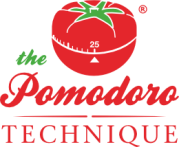
My writing space
I’ve been working on my productivity. Preliminary results are encouraging.
Usually, a goal like increased productivity or time management is someone’s New Year’s resolution. For me, it’s just an ongoing struggle.
I started on it (again) last summer when Tim and I were talking about finding time to complete projects. He asked if I had a good, organized working space. Hm. Well, I kind of do. My working space is organized approximately once—maybe twice—a year, when I look around me and decide that I need to get organized. Again. Or I need to set goals. Again. Or I need to revise my goals in light of what has happened recently in my life. You get the drift.
Anyway, Tim thought it might be easier for me to get more done if I were more organized. Doubtless he is correct, and he has pointed out various tools to me at one time or another, but last summer, with what I had going on, his advice seemed even more timely than usual. I needed to clear the decks (and my mind) in order to get more writing and editing done.
So I tried a few things. Here’s what’s working for me right now. I realize we’re past January 1st, but there’s no rule that says you absolutely must use New Year’s day to improve yourself. Organization and productivity are two areas of my life that I continue to tweak as time allows—or when I get desperate, whichever comes first.

Book cover from David Allen’s website
One boon to my recent productivity/organizational uptick is David Allen’s book, Getting Things Done. Here’s the thing: I’m certainly not his star pupil. The main thing I realized after implementing some of his methods is that I’m not as good at the everyday discipline of remaining organized as I ought to be.
Just as an example, I reorganized my filing system and bought all the requisite file folders and other foofaraw so that I could keep it up. I was really good about filing (or tossing) papers for a few weeks, but then I got more caught up in the cherry of the book (the “getting things done” part) that I let the ongoing cleanup and evaluation slide. Like so many other organizational tools, it was hard for me to keep implementing it the way the author/instigator intended.
But…I’ve actually accomplished numerous new tasks that had just been languishing in my wishful thinking pile, like attending conferences, participating in workshops, submitting short stories to paying markets, and starting this blog. So thanks, David Allen . If I start feeling stuck again, I know I need to revisit some of the strategies gleaned from your book.

Logo from Pomodoro website
Where Getting Things Done feels macro, my more recent productivity aid tends toward the micro. It’s all about the Pomodoros, baby. And I’m not talking about the delicious sauce.
I’d kind of heard about Francesco Cirillo’s Pomodoro Technique sometime a while back (probably from Tim) but I didn’t explore it at all until just recently.
What I’ve done so far: I’ve started using a timer while engaged in a task. There’s more to it than what I’m about to describe, but the basic unit of this technique is what the author calls a “Pomodoro”. You set a kitchen timer (or the one on your smart phone, or whatever) for 25 minutes, and work your ass off on one task for that length of time. For those 25 minutes you don’t surf the internet, answer emails or phone calls, get more coffee, vacuum the cat, or succumb to any of the other myriad distractions that can keep you from doing what you need to do. When the timer goes off, you set it again, for 5 minutes. This is a break, and you can surrender to some manner of distraction for 5 minutes before setting your timer for another 25 minutes and returning to your previous task or moving on to a new one.
I’ve tried this technique for just above a week. For my main focus, revising my NaNoWriMo novel. it’s worked surprisingly well so far. I dreaded starting that task. I imagined the revision process stretching out for months, all the while in the back of my head I’d be thinking that I really ought to be farther along. Full disclosure: right now I’m just scanning my printout and marking up the crap that needs to be dumped, researched further, or rewritten. Judging by my progress so far, I should be done marking up the manuscript in another 22 Pomodoros, or early next week.
When I actually sit at my computer to actually rewrite those sections, I’ll need to find out how many Pomodoros it takes to rewrite, as opposed to just flagging boo-boos. But I’m looking forward to that part of the process. I think it makes it easier to face an enormous task when I have a realistic clue how long it might take me.
On a related topic, one of my goals has been to start submitting my fiction. Getting Things Done and the Pomodoro Technique have both helped me on that front.
Here’s a scoreboard update.
Year: 2014
Submissions: 2 Acceptances: 0 Rejections: 0



